Lilies are a popular flower that symbolize purity, grace, beauty, and fertility. With their large, showy blooms on long, elegant stems, lilies have a timeless appeal. But beyond their visual allure, lilies hold symbolic meaning in many cultures and faiths. Understanding the lily flower meaning can deepen your appreciation of this beloved flower.
In this article with Impeccable Nest, we’ll explore the origins and symbolism of the lily, its significance across cultures, and how to incorporate lilies into celebrations, rituals, and decor. Discover the story behind the graceful lily and what it represents.
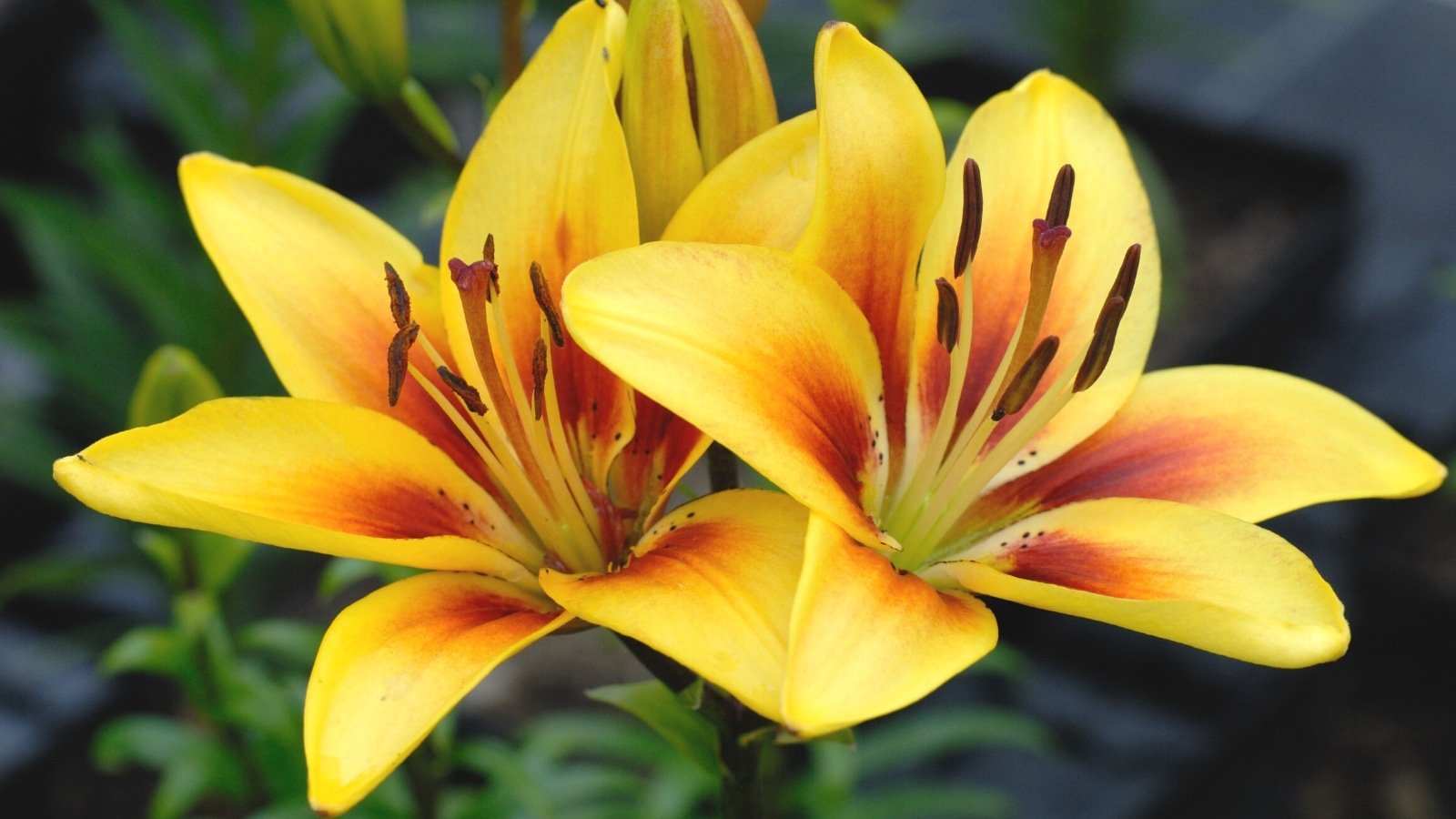
Meaning and Symbolism of the Lily Flower
So what do lilies represent today? Here are some of the most common symbolic meanings associated with the lily:
Purity
The lily flower is an elegant and timeless bloom that has been admired for centuries for its beauty, fragrance, and symbolism. While there are many different types of lilies, each with its own unique meanings, the white lily is particularly significant as a symbol of purity, innocence, and grace.
The white lily has long been associated with religious and spiritual beliefs, especially in Christianity, where it is often used to represent the Virgin Mary and her pure heart. The bright white color of the lily is believed to symbolize the purity of the soul, as well as the clarity of thought and intention that comes from a pure heart and mind.
In addition to its spiritual significance, the white lily is also often given as a gift to celebrate important milestones such as weddings, baptisms, and graduations. As a symbol of purity, it is seen as an appropriate gift for these occasions, representing the beginning of a new chapter in life and the hope for a bright and pure future.
Beyond its symbolic meaning, the white lily is also prized for its delicate beauty and sweet fragrance. Its distinctive trumpet-shaped blooms and long, slender stems make it a popular choice for floral arrangements and bouquets, both for its aesthetic appeal and its deep symbolic meaning.
Whether you are looking to give a meaningful gift or simply enjoy the beauty of this timeless bloom, the white lily is sure to bring joy and inspiration wherever it goes. With its powerful symbolism and graceful elegance, it is truly a flower that embodies the best of the human spirit and reminds us of the power of purity, innocence, and grace in our lives.
Fertility Motherhood
Lilies are beautiful and elegant flowers that have been cherished by humans for centuries. The lily flower meaning is deeply rooted in ancient civilizations, where it was believed to represent various aspects of life. These flowers were commonly associated with the feminine essence, fertility, childbirth, and motherhood.
In Greek mythology, lilies were believed to have sprung from the milk that flowed from Hera’s breast as she nursed her son, Hercules. This association with motherhood and nourishment led to the lily being considered a symbol of motherhood and fertility. It was often used as an offering at temples dedicated to goddesses, particularly those associated with fertility and childbirth.
In Christianity, lilies are associated with the Virgin Mary and are commonly used in artwork depicting her. They are also seen as a symbol of purity, innocence, and the resurrection, as they are said to bloom around the time of Easter.
The lily’s connection to motherhood and femininity can also be seen in its use in traditional medicine. The root of some lily species was used in ancient Chinese medicine to treat infertility and menstrual disorders. In Ayurvedic medicine, lilies were believed to have cooling properties and were used to treat conditions such as fever and inflammation.
In addition to these symbolic meanings, lilies are also admired for their beauty and fragrance. Different colors of lilies are associated with different meanings, such as white lilies representing purity and yellow lilies representing gratitude and joy.
The lily flower meaning is multifaceted and deeply rooted in history and culture. From its association with motherhood and fertility to its use in art and medicine, the lily remains a beloved and meaningful flower.
Rebirth Renewal
The lily flower is a beautiful and fascinating plant that holds significant meaning in various cultures and traditions. As a flower that grows from a bulb, the lily represents rebirth, renewal, and resurrection. Its meaning can vary depending on the specific type of lily, but generally, it symbolizes purity, innocence, and beauty.
In many religious ceremonies and rituals, the lily is often used as a symbol of spirituality and holiness. For instance, in Christianity, the lily is associated with the Virgin Mary, who is often depicted holding or surrounded by lilies. The white lily, in particular, represents her purity and divine nature. It’s also thought to symbolize the resurrection of Jesus Christ, as the lily springs forth from the earth after lying dormant for a period of time.
Similarly, in Buddhism, the lily is seen as a representation of the Buddha’s teachings, and it’s often used in meditation practice. The lotus flower, which is closely related to the lily, is also a sacred symbol in Hinduism, Buddhism, and other Eastern religions. It’s associated with enlightenment, purity, and spiritual growth.
Beyond its religious significance, the lily flower has various cultural meanings as well. In Greek mythology, the lily was said to have grown from the milk of the goddess Hera, making it a symbol of motherhood and fertility. In ancient Egypt, lilies were commonly depicted in art and were associated with the sun god Ra. In Japan, lilies are associated with funerals and are often given as condolences to grieving families.
The meaning of the lily flower is rich and complex, reflecting its diverse cultural and historical associations. Whether used in religious ceremonies, artistic expression, or everyday life, the lily remains a powerful symbol of rebirth, purity, and spiritual growth.
Beauty Elegance
Lilies are stunning flowers that are widely recognized for their exquisite beauty and elegance. They have a refined appearance that exudes an air of luxury, making them particularly popular in the world of fashion and high-end consumer goods.
Symbolically, lilies carry a diverse range of meanings, depending on the cultural context in which they are viewed. In many cultures, lilies are seen as symbols of purity, innocence, and new beginnings. This is perhaps because of their association with the Christian story of the Virgin Mary, who is often depicted holding a white lily. In this context, the lily represents Mary’s purity and immaculate conception.
In other cultures, lilies are associated with death and mourning. For example, in ancient Greek mythology, lilies were said to have grown from the tears of Hera, the goddess of marriage, after she learned of her husband Zeus’s infidelities. As a result, lilies became a symbol of grief and sorrow, and were often used in funerary ceremonies.
Despite these darker connotations, however, lilies are generally regarded as positive symbols in most cultures. They are prized for their beauty, elegance, and sophistication, and are often used in artistic and decorative contexts. From classic paintings to modern fashion designs, lilies continue to capture the imagination of artists and designers around the world.
In addition to their symbolic meanings, lilies are also valued for their medicinal and culinary properties. The bulbs of certain species of lilies are used in traditional medicine to treat a variety of ailments, including fever, coughs, and skin conditions. Lilies are also commonly used in cooking, particularly in Asian cuisine. The petals of the lily flower can be eaten raw or cooked, and are often used in salads, soups, stir-fries, and other dishes.
The lily flower is a complex and multifaceted symbol that carries a wide range of meanings and associations. Whether used in an artistic, religious, medicinal, or culinary context, lilies are universally recognized as symbols of beauty, elegance, and refinement.
Transience Mortality
Lilies are stunningly beautiful flowers that have been admired for centuries. Their delicate, colorful petals and sweet fragrance make them a popular choice for gardens, weddings, and other special occasions. However, beyond their aesthetic value, lilies also hold deep symbolic meaning. One of the most significant symbols associated with lilies is the idea of mortality and life’s fleeting nature.
The fleeting peak bloom of lilies represents the transience of life. Lilies only bloom for a short period each year, and even then, their peak bloom only lasts for a few days. This short window of time reminds us that life is precious and fleeting, and that we should cherish every moment we have.
Additionally, the association between lilies and mortality can be traced back to ancient cultures. In many ancient societies, lilies were often used in funerary rituals as a symbol of death and rebirth. This symbolism continues to this day, as lilies are commonly used at funerals and other memorial services.
One particular type of lily, the white lily, is especially associated with mortality and mourning. The white lily has long been associated with the Virgin Mary and is therefore seen as a symbol of purity, innocence, and grace. However, its use in funeral arrangements and memorials has given it an additional layer of meaning, representing the hope of new life after death.
Despite the association between lilies and mortality, they are also a symbol of hope and renewal. Many species of lilies grow from bulbs, which lie dormant during the winter months before regrowing and blooming again in the spring. This cycle of growth, dormancy, and renewal is a powerful reminder of the cyclical nature of life and the hope of new beginnings.
While lilies are undoubtedly beautiful flowers, they also hold deep symbolic meaning. Their fleeting peak bloom serves as a reminder of the transience of life, while their association with death and rebirth reminds us of the cyclical nature of existence. At the same time, lilies also offer hope and renewal, making them a powerful symbol of both life and death.
Majesty Nobility
One of the most common associations with the lily flower is its connection to royalty and nobility. This is due in part to the fact that the lily is often associated with the Virgin Mary in Christian tradition, who is frequently depicted holding a lily or standing on a bed of lilies. Similarly, in ancient Greece, the lily was associated with Hera, the queen of the gods, and was often used in religious ceremonies and offerings.
The regal stems of the lily flower have also contributed to its association with nobility. The tall, upright stems give the lily an air of grandeur and sophistication, making it a favorite among gardeners and florists alike. In many cultures, the lily has been used as a symbol of power and authority, and it has been given as a gift to kings, queens, and other prominent figures throughout history.
Beyond its association with royalty and nobility, the lily flower has also held many other meanings and interpretations over time. In some cultures, the lily has been seen as a symbol of purity, innocence, and new beginnings. In others, it has been viewed as a symbol of death and mourning, particularly when used in funeral arrangements or placed on graves.
The lily flower is a versatile and timeless symbol that has stood the test of time. With its bold, showy blooms and regal stems, it continues to captivate people around the world and inspire new interpretations and meanings. Whether used to honor a loved one or simply appreciated for its natural beauty, the lily is sure to remain a beloved flower for generations to come.
Decoding the Colors: Lily Flower’s Palette of Meaning
Just as colors evoke different emotions, the varying hues of lily flowers carry distinct symbolism. Understanding the language of color can deepen the message conveyed by these enchanting blooms.
White Lilies
White lilies are a beautiful and delicate flower that has been around for centuries. They have been used in many different cultures and traditions, and hold a significant meaning in various occasions. The pure white color of the lily symbolizes purity, innocence, and virginity. This is why they are often associated with religious ceremonies such as weddings, baptisms, and funerals.
In ancient Greek mythology, the lily was believed to be a symbol of purity and divinity. According to the myth, the goddess Hera dropped her breast milk on earth, which then turned into lilies. As a result, lilies were considered sacred and were often used in religious ceremonies.
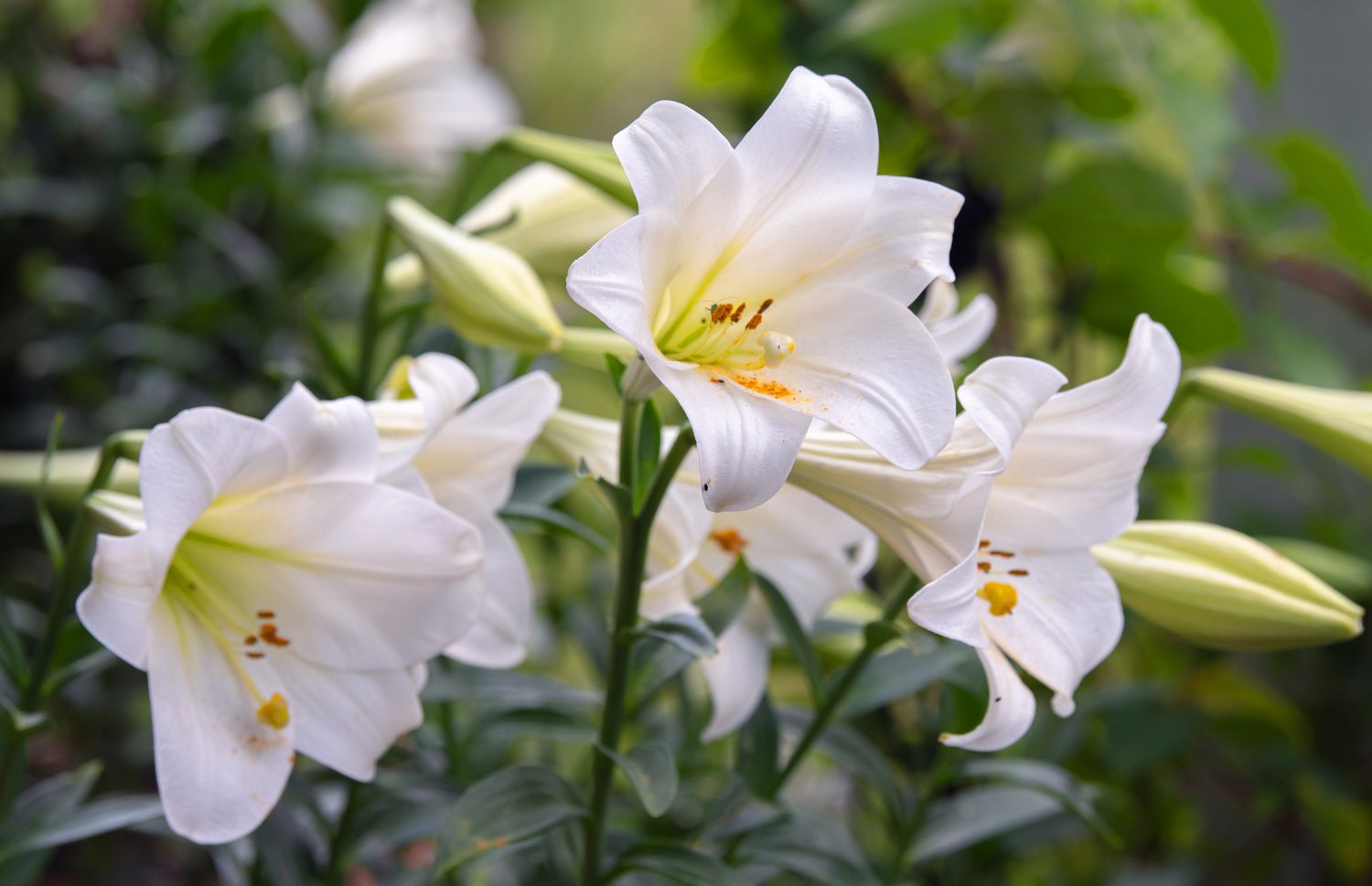
White lilies have a particular significance in the Christian religion. The flower is believed to symbolize the purity of the Virgin Mary, who gave birth to Jesus Christ. The flower is also associated with the resurrection of Christ, making it a popular choice for Easter celebrations.
Weddings are another occasion where white lilies are commonly used. The flower symbolizes purity, innocence, and new beginnings, which makes it the perfect choice for a marriage ceremony. It represents the love and commitment between two people who are starting their journey together.
White lilies are also used in funeral ceremonies. The flower represents the purity of the soul and is often used to express condolences and sympathy for the loss of a loved one. The white color of the lilies symbolizes the hope for eternal life and the continuation of the soul beyond death.
Pink Lilies
Pink Lilies are a stunning flower that have gained popularity due to their delicate and romantic appearance. These flowers have been known to convey many different meanings depending on the context in which they are given or used. However, one of the most common meanings associated with Pink Lilies is their ability to convey feelings of admiration, gratitude, and joy.
When someone receives a bouquet of Pink Lilies, it is often seen as a gesture of appreciation. These flowers have a way of brightening up any space with their vibrant pink hues and stunning petals. They are a symbol of beauty and elegance, making them an excellent choice for expressing your admiration for someone special.
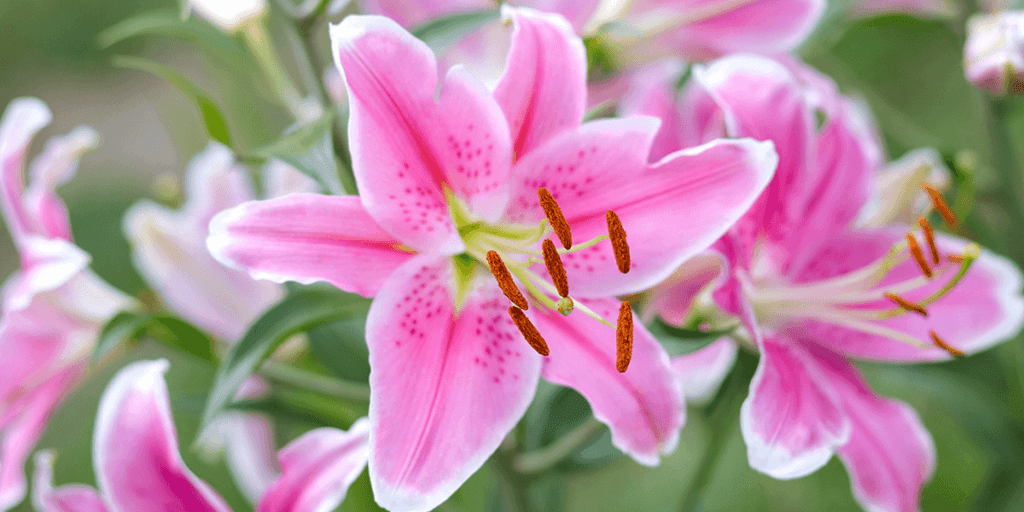
Aside from admiration, Pink Lilies also represent gratitude. When you want to show someone how much you appreciate them, Pink Lilies are a great choice. Whether it’s a friend who has helped you through a tough time or a co-worker who has gone above and beyond their duties, giving them a bouquet of Pink Lilies will let them know just how much you value their presence in your life.
In addition to admiration and gratitude, Pink Lilies are also associated with joy and celebration. These flowers are often used to mark significant milestones such as birthdays, anniversaries, and graduations. The vibrant pink color of the petals is a symbol of happiness and positivity, making them the perfect choice for any joyous occasion.
Yellow Lilies
Yellow lilies are beautiful flowers that are commonly associated with warmth, happiness, and friendship. These cheerful blooms have a way of bringing joy to any occasion, making them a popular choice for gifts or as decorations. They are often seen at weddings, graduations, and other celebrations that mark new beginnings.
The color yellow is known to be a symbol of happiness and optimism, and the yellow lily embodies these qualities perfectly. This flower has a bright and sunny appearance that can instantly lift one’s mood. Additionally, it exudes a sweet fragrance that fills the air with a delightful aroma.

Yellow lilies are often given as gifts to show appreciation or to express well-wishes. They are a perfect way to brighten someone’s day who might be going through a tough time or to congratulate them on a new opportunity or milestone. The warmth and brightness of these flowers make them an excellent choice for those who want to convey feelings of love, hope, or joy.
In addition to their symbolic meanings, yellow lilies are also highly valued for their aesthetic appeal. They have long, slender stems that hold up the trumpet-shaped flowers, which can range in size from small and delicate to large and majestic. Their vibrant yellow hue pairs well with other colors, making them a versatile choice for floral arrangements.
Yellow lilies are a beautiful and meaningful flower that can bring happiness and warmth to any occasion. Whether you’re looking to celebrate a new beginning or simply brighten someone’s day, these flowers are a perfect choice. Their cheerful color and lovely fragrance make them a true delight to give and receive.
Orange Lilies
Orange lilies, also known as Lilium bulbiferum, are a vibrant and stunning flower that have been admired for centuries. This flower is known for its fiery orange color, which symbolizes enthusiasm, confidence, passion, and creativity. The bright hue of the petals, combined with their trumpet-like shape, makes them an attention-grabbing addition to any garden or floral arrangement.
The symbolism behind orange lilies is particularly powerful in times of struggle or challenge. These flowers are often used as a source of inspiration to ignite enthusiasm and motivation. Their bold color can help uplift spirits and provide a sense of vitality during difficult times. This is why they are often given as gifts to people who may be going through a tough time in life.
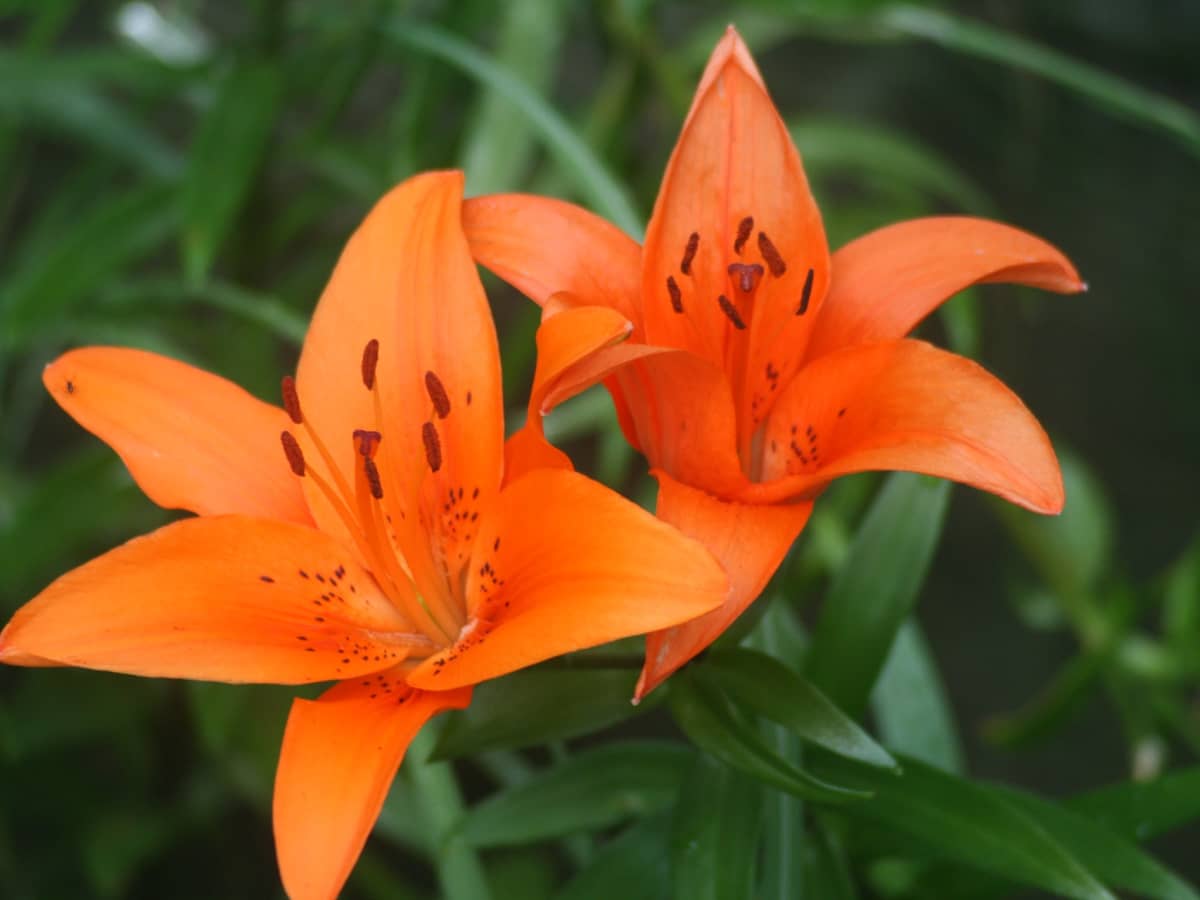
In many cultures, orange lilies are also associated with femininity and motherhood. They are often given as gifts to new mothers, symbolizing the joy and beauty of bringing a new life into the world. In this context, the meaning behind orange lilies is one of hope, happiness, and the beginning of something new.
Beyond their symbolic meanings, orange lilies are a popular choice for floral arrangements because of their versatility. They can be paired with other flowers of various colors and shapes, creating beautiful bouquets that are perfect for any occasion. Their long and sturdy stems make them ideal for tall vases, while their bright color ensures they stand out in any setting.
Orange lilies are a stunning and meaningful flower that bring joy and inspiration to any space. Whether used in a bouquet, given as a gift, or simply enjoyed in a garden, these flowers are sure to evoke feelings of confidence, passion, and creativity.
Purple Lilies
Purple lilies are a beautiful and unique type of flower that hold deep symbolic meaning in various cultures and traditions. They are known for their stunning beauty, captivating scent, and deeply spiritual qualities which make them a popular choice in religious ceremonies and special occasions.
One of the most significant meanings associated with purple lilies is spirituality. In many religions, the color purple represents divinity and royalty, making it a perfect symbol for spiritual ceremonies. The bloom of the purple lily is often interpreted as a representation of the divine presence that is found within all things, reminding us to connect with our higher selves and the universe around us.
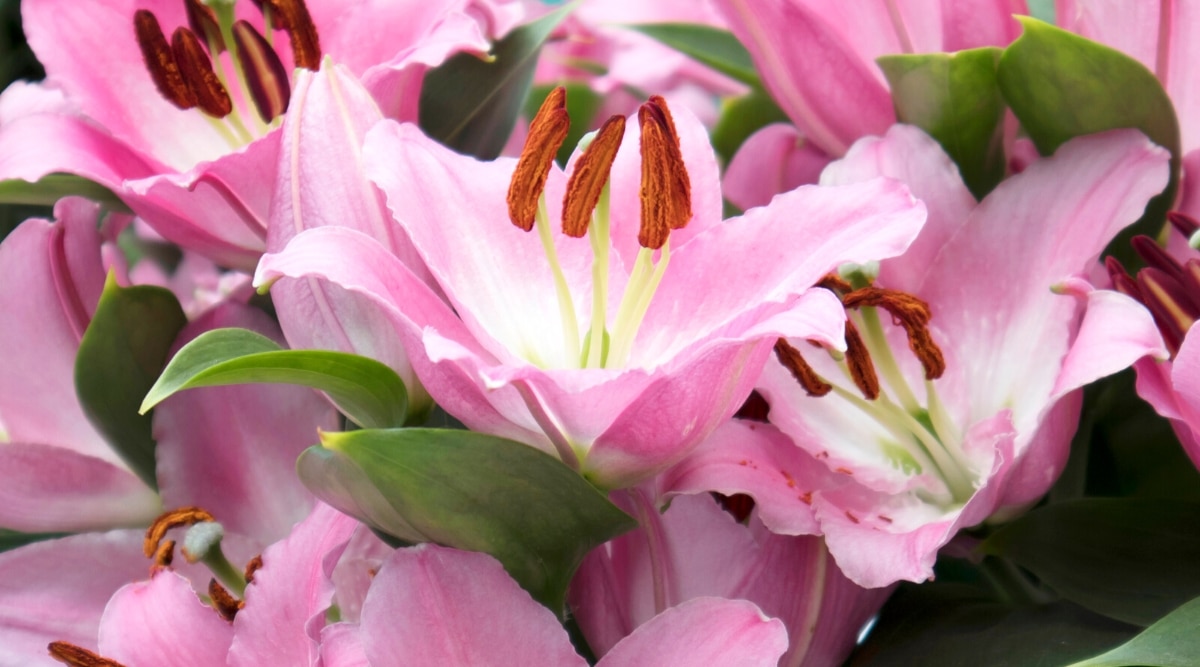
Another important meaning associated with purple lilies is mysticism. These flowers have been used in various mystical practices throughout history, particularly in ancient Egypt where they were believed to have healing properties. In some cultures, the purple lily is also seen as a symbol of the interconnectedness between the physical and spiritual worlds, reminding us to seek harmony and balance in all aspects of our lives.
Finally, purple lilies are known for their elegance and grace. Their striking beauty and rich color make them a popular choice for expressing admiration and respect in many cultures. Whether given as a gift or used in ceremonies, these flowers are a wonderful way to honor someone’s accomplishments or show appreciation for their contributions.
The Lily Flower’s Profound Meaning in Love
Love, the most profound and complex of human emotions, finds a voice through the lily flower’s symbolic language. A bouquet of lilies can convey a wide range of sentiments, from adoration and purity to passion and devotion. Each variety of lily brings its own nuances to the message, creating a tapestry of emotions.
- The Stargazer Lily: When it comes to expressing intense love and infatuation, the Stargazer Lily takes center stage. Its vibrant pink hue symbolizes admiration and adoration, making it the ideal choice for those daring to express their deepest affections.
- The Calla Lily: Associated with elegance and beauty, the Calla Lily carries a more subtle message of love. It represents purity, faithfulness, and rebirth, making it an enchanting choice for weddings or anniversaries.
- The Easter Lily: As a symbol of the resurrection of Christ, the Easter Lily embodies hope, purity, and new beginnings. Offering someone an Easter Lily can represent a fresh start in a romantic relationship or serve as a gesture of forgiveness and reconciliation.
- The Tiger Lily: With its fiery orange hues, the Tiger Lily carries a passionate message of love. It symbolizes confidence, strength, and desire. Presenting someone with a bouquet of Tiger Lilies can be an enticing invitation to embark on a romantic journey.
The lily flower’s meaning in love extends beyond mere words. Its delicate fragrance and captivating beauty have the power to kindle emotions that words alone cannot convey. A single stem or an artfully arranged bouquet can speak volumes, touching the heart of the recipient in profound ways.
The Lily Flower’s Eloquent Expression of Grief and Loss
While the lily flower is often associated with joyous occasions, it also possesses a unique ability to convey sentiments of sorrow and loss. The elegiac charm of this bloom has made it a poignant symbol for death and funerals across various cultures.
- The White Lily: Representing purity, innocence, and the departed soul’s restored innocence, the white lily is a common choice at funerals and memorial services. Its serene beauty offers solace and serves as a reminder that life endures even in the face of loss.
- The Peruvian Lily: Also known as Alstroemeria, the Peruvian Lily carries a message of friendship and devotion. Its vibrant colors bring comfort during times of mourning, reminding those left behind of the enduring bonds formed with loved ones.
- The Madonna Lily: Intrinsically tied to religious symbolism, the Madonna Lily represents purity and the Virgin Mary’s immaculate nature. It is often seen in funeral floral arrangements, particularly in Catholic ceremonies, as a testament to faith and hope in eternal life.
The lily flower’s appearance at funerals brings a touch of grace and beauty to the somber occasion, offering solace to grieving hearts. Its presence reminds us that even in the depths of sorrow, there is a glimmer of hope and a reminder of the fragility and preciousness of life.
The Lily Flower’s Role in Funeral Traditions
Funeral traditions vary across cultures, but one common thread that unites many is the presence of lilies as a symbol of sympathy and remembrance. The solemn beauty of these blooms provides comfort to grieving families and pays tribute to the life lived.
In Western cultures, white lilies often feature prominently during funerals, serving as a visual representation of the departed’s purity and innocence. They offer solace to those in mourning and express condolences in a somber yet hopeful manner.
In some Asian cultures, lilies are associated with death and are used sparingly at funerals. However, they still hold deep symbolic meaning, representing the soul’s transition into the afterlife and a wish for eternal peace.
Whether it’s a single lily or an entire arrangement, the inclusion of these captivating flowers honors the memory of the deceased and offers support to those left behind. The lily’s presence brings a touch of serenity and consolation during times of profound grief.
The Daring Challenge of Lily Flower’s “I Dare You to Love Me”
The declaration “I dare you to love me” encapsulates the essence of the lily’s symbolism. It challenges us to take risks in matters of the heart, to be bold, and to open ourselves up to the possibility of rejection. The act of loving someone deeply requires us to expose our most vulnerable selves, which can be a daunting and terrifying experience. But just as the lily flower courageously blooms despite its fragile appearance, we too must summon the strength to face our fears and embrace the transformative power of love.
The lily flower is a poignant reminder that true love often necessitates taking daring leaps of faith. It invites us to step outside our comfort zones and pursue connections that inspire growth and transformation. Whether it’s confessing our feelings to someone special or finding the courage to love again after heartbreak, the lily flower’s message encourages us to seize opportunities for love and connection fearlessly.
Beyond its romantic connotations, the lily flower also speaks to the importance of embracing life’s challenges with grace and resilience. Just as the lily blooms amidst adversity, we too must cultivate the strength to persevere in difficult times. The lily’s message of determination and resilience is a powerful reminder to remain steadfast and hopeful, even in the face of life’s greatest challenges.
In conclusion, the lily flower’s symbolism of “I dare you to love me” encapsulates an inspiring message of courage, vulnerability, and resilience. Its call to step outside our comfort zones and pursue love with conviction is a reminder to embrace life’s challenges with grace and transform them into opportunities for growth and self-discovery. So let the lily’s audacious spirit inspire you to take bold steps in matters of the heart and embrace the transformative power of love.
The Significance of Lilies in Religion and Culture
Beyond their core symbolic meanings, lilies hold spiritual and cultural significance in many faiths and traditions across the world:
- Christianity – White lilies represent the Virgin Mary’s purity. They appear frequently in images of the Annunciation.
- Hinduism – Lilies are associated with Lakshmi, the goddess of prosperity, wealth, and beauty.
- Buddhism – The white lily symbolizes compassion. It’s believed its radiant bloom masks a solemn enlightenment.
- Weddings – Lilies are popular wedding flowers representing purity, commitment, and rebirth.
- Chinese Culture – In China, lilies connote motherhood and fertility. Giving lilies is a way to wish a couple prosperity.
- May Day – On this spring festival, lilies are delivered as gifts and used in floral crowns. The lily heralds the arrival of spring.
Across faiths, lilies adorn festivals, special occasions, and sacred spaces. They bring spiritual symbolism and natural beauty to cultural celebrations worldwide.
How to Use Lilies for Celebrations, Gifts, and Decor
If you want to incorporate the elegant lily into your next event, here are some ideas:
- Send or gift Stargazer lilies to symbolize sympathy and rejuvenation. Their pink color exudes warmth.
- Create a lily flower crown for spring festivals and special occasions. It represents growth, renewal, and the height of spring.
- Decorate a home, wedding, or religious space with calla lilies for their sophistication. Place calla lilies in minimalist arrangements to let their shape take center stage.
- Plant Asiatic lilies in your garden to create focal points of vivid color. Cut them to display in the home.
- Float Oriental lilies in bowl arrangements. Their fragrance and ruffled blooms will scent and decorate indoor spaces.
- Give potted Easter lilies as holiday gifts. They symbolize Christ’s resurrection and the promise of eternal life.
Examples of Lilies Used in Culture and Art
- The Annunciation paintings by Renaissance masters like Botticelli and Leonardo da Vinci depict Madonna lilies representing Mary’s purity.
- Claude Monet painted a series of Water Lilies from his garden, capturing the fleeting beauty and tranquility of lilies floating on water.
- Lilies appear frequently on ancient Minoan, Greek, and Roman pottery, friezes, and architecture as ornaments.
- The lily is a popular floral tattoo design representing beauty, femininity, sorrow, and memorial.
- In T.S. Eliot’s poem The Wasteland, he uses lilies to represent the transience of life with the line “April is the cruelest month, breeding lilacs out of dead land.”
Conclusion
The lily flower, with its captivating beauty and rich symbolism, has woven itself into the fabric of human emotion and expression. Its language speaks of love, loss, challenges, and hope, transcending cultural boundaries and touching hearts across the globe.
Whether you’re seeking to convey profound emotions, celebrate a joyful occasion, or honor the memory of a loved one, lilies offer an exquisite medium through which to express your intentions. Allow this enchanting blossom to be your guide as you navigate the intricate tapestry of human connection and emotion.
Let the lily flower’s enduring message echo in your heart: “I dare you to love me” – fearlessly, passionately, and without reservation.

We’re Emma Carole Paradis and Kimberly Carole, the owners and designers of Impeccable Nest, based in Bedford, New Hampshire. A mother-daughter team with a love of design. Originally from Manhattan Beach, California, now based in Bedford, New Hampshire, we bring a Southern California cool and New England tradition to our design. Not only do we work together…we also live together in a multi-generational home…and a home that they are known to design for others.
